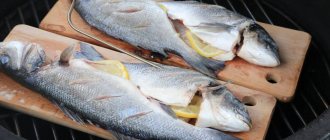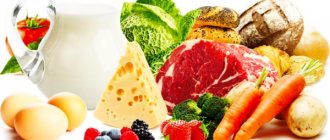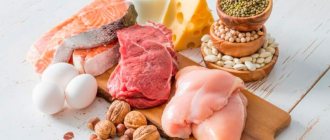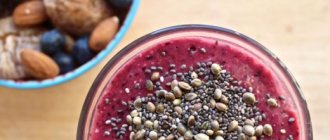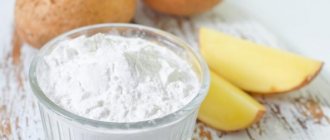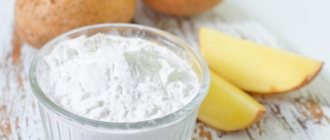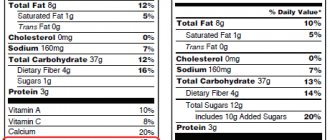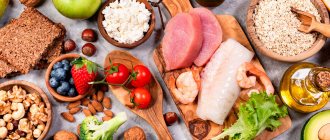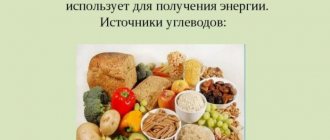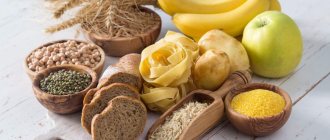Everyone knows from school that the human body needs protein no less than air. This element is the second most abundant element in the body, after water, and accounts for more than 19% of the weight. It is he who is responsible for the construction processes in the body, as well as good metabolism. We owe protein as a catalyst for growth and reproduction, as well as food absorption. But not everyone knows how to eat properly in order for the body to receive sufficient daily protein intake.
Fish is a healthy product for a number of reasons. One of them is the richness of vitamin D, microelements, and also protein. The benefits of fish for humans have been confirmed by numerous scientific studies.
A lack of proteins is fraught with excessive weight loss, the development of gastrointestinal problems and diseases, and dry skin. In addition to physical problems, a small amount of its consumption provokes a deterioration in cognitive abilities, including memory.
Protein in dairy products
| Protein g/100 g | Protein g/100 g | Protein g/100 g | |||
| Milk 0–1.5% | 3,00 | Kefir 0–1% | 3,00 | Adyghe cheese | 19,80 |
| 2,5–3,5 % | 2,90 | Kefir 2.5–3.5% | 2,90 | Dutch | 25,48 |
| melted | 2,90 | Ryazhenka 1% | 2,90 | Camembert | 15,30 |
| condensed | 7,35 | Ryazhenka 6% | 3,00 | Parmesan | 35,75 |
| powder | 26,00 | Cream 8% | 2,70 | Suluguni | 20,45 |
| goat | 3,60 | Cream 35% | 2,00 | Feta | 14,20 |
| Acidophilus 1% | 3,00 | Condensed cream. | 8,00 | Gouda | 24,90 |
| Acidophilus 3% | 2,90 | Cream powder | 19,00 | Brynza | 22,10 |
| Yogurt pl-yag. | 2,00 | Sour cream 10% | 2,70 | fused | 20,50 |
| Yogurt 1.5% | 4,10 | Sour cream 30% | 2,30 | Cottage cheese 0–1% | 22,00 |
| Yogurt 3.2–6% | 5,00 | Butter | 0,80 | Cottage cheese 18% | 15,00 |
| Milk shake | 4,10 | Ice cream | 3,70 | Curd mass | 12,00 |
Proteins contained in fish meat
The main structural substance of fish tissue is protein. Fish contains from 13 to 23% protein (average 15-20%). It contains carbon, oxygen, hydrogen, nitrogen, sulfur, as well as in small quantities iron, copper, zinc, iodine and other elements. A protein molecule is made up of amino acids. Currently, more than 30 different amino acids are known, 10 of them are essential, which cannot be synthesized in the body and must be supplied in the required quantity from food. These include lysine, methionine, arginine, histidine, leucine, isoleucine, phenylalanine, threonine, tryptophan and valine. Essential amino acids are alanine, glycine, proline, serine, aspartic acid, glutamic acid, etc. Depending on the physicochemical properties, fish is divided into water-soluble (albumin), salt-soluble (globulin), insoluble in water and salts (myostromins) and insoluble in water, salts and acids (stroma). Water-soluble proteins include myogens A and B, myoalbumin, and myoprotein. In fish meat they make up 20-25% of the total amount of proteins and are part of the sarcoplasm. Salt-soluble proteins include myosin, actin, actomyosin, myoglobin and globulin X. These proteins form the myofibrils of muscle fiber and account for 60-78% of the total mass of proteins. Myostromins are part of the sarcolemma. This group also includes proteins of cell nuclei - nucleoproteins. The content of myostromins in fish meat is about 3%. Stromal proteins include collagen and elastin; their amount varies depending on the type of fish from 2 to 10%. Proteins in meat are in a colloidal state, they are unstable and change their properties under the influence of temperature, high acidity and sodium chloride. When heated to a temperature of 38-51°C, albumin proteins coagulate. Globulin proteins are more stable; they coagulate (coagulate) at a temperature of 37-88°C. When the pH decreases to 5.1-5.3, albumin proteins, and at pH 4.5-4.6, globulin proteins precipitate and lose their solubility. Similar changes occur under the influence of salt when salting fish. When the amount of water in meat is reduced (drying, freezing), proteins also change their properties. Based on their physiological properties, proteins are divided into sarcoplasmic proteins, those involved in metabolism; myofibrillar, controlling movement; stromine, which gives muscles and the body a certain shape, and is part of bones and cartilage. There are up to 25% of sarcoplasmic proteins in the fish body, about 70 myofibrillar proteins and up to 5% of stromin proteins of the total amount of proteins. In terrestrial animals, the amount of stromal proteins reaches 20%. These figures are very typical and show how much less developed the connective tissue is in the body of fish compared to terrestrial animals. The low content of stroma proteins in fish ensures tenderness, softness of the meat and better digestibility. Fish proteins contain all the essential amino acids for the body. Proteins in muscles are predominantly in a colloidal state in the form of gels and sols, which determines their instability and changes in the properties of protein substances in fish meat when environmental conditions change. When solutions are acidified or saturated with salt (when salting fish), proteins lose solubility and precipitate (salt out). When solutions are heated (during boiling, frying, baking), proteins coagulate (coagulate). Similar changes occur in proteins when fish meat is dehydrated (drying and freezing). A change in the original properties of proteins under the influence of physical and chemical factors is called denaturation. The changes that occur during denaturation boil down, in particular, to the fact that proteins lose their ability to dissolve in water and salt solutions. At the first stages, the denaturation process is still reversible; as it develops, profound changes in proteins occur and the process becomes irreversible, which leads to a deterioration in the quality of the product.
- Chemical composition of fish meat (part 2)
- Chemical composition of fish meat (part 1)
- Mass composition of fish
- Fish sizes and specific surface area of fish (part 2)
- Fish sizes and specific surface area of fish (part 1)
- Fish body shape
- Chromosome sets and genetic determination (part 1)
- Chromosome sets and genetic determination (part 2)
- Chromosome sets and genetic determination (part 3)
- Reproductive system and fertilization in fish (part 1)
- Reproductive system and fertilization in fish (part 2)
- Reproductive system and fertilization in fish (part 3)
- Reproductive system and fertilization in fish (part 4)
- Inherited external qualitative characteristics (part 1)
- Inherited external qualitative characteristics (part 2)
- Inherited external qualitative characteristics (part 3)
- Inherited external qualitative characteristics (part 4)
- Inherited external qualitative characteristics (part 5)
- Heritable biochemical differences (part 1)
- Heritable biochemical differences (part 2)
- Heritable biochemical differences (part 3)
- Heritable biochemical differences (part 4)
- Heritable biochemical differences (part 5)
- Genetics of quantitative traits (part 1)
- Genetics of quantitative traits (part 2)
- Genetics of quantitative traits (part 3)
- Genetics of quantitative traits (part 4)
- Genetics of quantitative traits (part 5)
- Main directions of selection
- Growth Rate (Part 1)
Protein in eggs
The protein content in 100 g of egg white of any eggs (chicken, quail, goose) is approximately the same - 11.55 g, and in egg yolks - 16.25 g. It is more convenient for bodybuilders and other athletes to count proteins not in 100 g, but by the number of eggs . 1 medium-sized raw chicken egg (55 g) contains 6.9 g of protein - 4.14 g in the white, 2.20 g in the yolk and 0.56 g in the shell. The amount of protein increases slightly with cooking. The healthiest egg according to BZHU should be a freshly cooked soft-boiled egg - 7.1 g of protein (4.34 g in white, 2.20 g in yolk, 0.56 in shell).
When creating a menu, the amount of protein consumed from 1 egg is rounded to 6.5 g.
Protein and its importance for the human body
Protein is one of the main building blocks for the body. His role is invaluable. Every cell in the human body is made up of proteins. They perform many functions that ensure the vital functions of the body:
- are structural elements of hair, bones and skin;
- trigger biochemical reactions;
- provide the production of enzymes and hormones;
- promote the absorption of vitamins, fats, carbohydrates and minerals;
- form the body's defense response to infections.
Protein sources
Unlike other elements (fats, carbohydrates), proteins do not perform a storage function. Lack of proteins causes serious disturbances in the functioning of the endocrine glands, weakening of brain activity, slower growth and development, and decreased immunity. As an energy source, proteins are of secondary importance, since they can be replaced by fats and carbohydrates.
The formation of proteins in the human body occurs from amino acids supplied directly from food. There are two types of amino acids:
- essential (phenylalanine, lysine, methionine, isoleucine, valine, leucine, threonine, tryptophan) are not formed in the body and must be supplied with food. Mainly found in animal products;
- non-essential (cystine, alan, arginine, tyrosine) are synthesized in the human body from other amino acids.
Proteins are divided into two types: complete and incomplete. Complete ones contain all the essential amino acids. Their sources are eggs, protein-rich fish, meat, poultry and dairy products. Incomplete proteins are found in plant foods.
Note! When planning meals, it is worth considering that more than 90% of amino acids from animal products are absorbed in the intestines, from 60 to 80% from plant products.
Protein in meat and meat products
| Protein g/100 g | Protein g/100 g | Protein g/100 g | |||
| Boiled beef | 25,80 | Beef stew | 20,56 | Ham | 22,60 |
| fatty pork | 11,70 | Stewed pork | 13,50 | Dried sausage | 21,67 |
| lean pork | 22,50 | Beef liver | 17,90 | Raw smoked sausage | 24,80 |
| lean lamb | 25,00 | Pork liver | 18,80 | Boiled-smoked sausage | 17,20 |
| chicken carcass | 26,00 | Liver pate | 11,60 | Boiled sausage | 12,85 |
| turkey carcass | 29,00 | Dumplings | 9,95 | Milk sausages | 11,00 |
| rabbit | 21,20 | Buzhenina | 10,00 | Beef sausages | 11,40 |
Protein in fish and seafood
| Protein g/100 g | Protein g/100 g | Protein g/100 g | |||
| Salmon | 20,00 | capelin | 13,40 | Canned pink salmon | 20,90 |
| Pink salmon | 20,50 | Sprat Danube. | 17,10 | tuna | 22,55 |
| Chum salmon | 19,90 | Silver carp | 19,62 | sardine | 17,90 |
| Dorado | 19,80 | Carp, bream | 17,10 | sardinella | 20,33 |
| Horse mackerel | 18,50 | Zander | 18,40 | saury | 18,30 |
| Mackerel | 18,00 | White amur | 19,00 | bull | 17,57 |
| Hake | 16,60 | Pike | 18,40 | Black caviar | 26,80 |
| Cod | 16,00 | River trout | 18,20 | red | 31,50 |
| Sea bass | 18,20 | Crayfish | 15,50 | pollock | 27,90 |
| Notothenia | 15,70 | Squid | 18,25 | capelin | 11,75 |
| Ice fish | 17,70 | Shrimps | 20,50 | cod | 11,50 |
| Pollock | 15,90 | Mussels | 11,50 | zander, pike | 17,35 |
| Fatty herring | 17,77 | Sea kale | 0,90 | Sprats in oil | 17,47 |
| Lean herring | 19,10 | Krill canned | 17,57 | Cod liver cons. | 4,20 |
Protein in cereals and grain products
| Protein g/100 g | Protein g/100 g | Protein g/100 g | |||
| Buckwheat porridge kernel | 12,60 | wheat, Artek | 11,00 | Corn cons. | 2,20 |
| buckwheat work | 9,57 | semolina | 10,30 | Pasta TV/c | 3,20 |
| pearl barley | 9,90 | millet | 11,50 | White bread, loaf | 24,80 |
| barley | 10,00 | rice | 7,50 | Ukrainian | 6,60 |
| oat groats | 12,30 | quinoa | 14,20 | Borodinsky | 6,80 |
| Hercules | 15,94 | polenta | 6,70 | wholegrain | 13,00 |
| bulgur | 13,00 | Corn on the cob | 3,20 | Bread | 10,00 |
Protein in Bean Side Dishes
The protein content of most legumes puts them in the category of products that compete with meat, fish and hard cheeses:
- raw/roasted peanuts - 26.00;
- fresh and frozen green peas - 5.00 g;
- canned green peas - 3.00;
- split peas (green, yellow) - 20.40–23.12;
- grain beans and beans, boiled - 20.90–21.10;
- canned beans - 10.20–11.00;
- fresh green beans - 2.53–3.00;
- Frozen green beans - 1.90–2.00;
- lentils (green, black, red) - 23.85–24.63;
- chickpeas - 20.10;
- mung bean - 23.50–24.86.
Vegetable beans are considered the best legume crop in terms of balanced amino acid composition. They correspond 85.3% to chicken egg white and 112.7% to the WHO “reference” protein.
Great Top Ten Protein-Rich Foods
Here are the ten most protein-rich foods, expressed as a percentage of their weight:
- Fish – different types contain from 15% to 25%.
- Cheeses – up to 30%. However, they are very high in calories. For example, the energy value of edam cheese is 352 kcal per 100 g, cheddar cheese is 392 kcal per 100 g. Therefore, cheeses are minimized in the diet of weight loss programs.
- Cottage cheese – from 0 to 14-20%. For diets, it is recommended to eat low-fat cottage cheese.
- Beef – 25%. It is preferable to eat veal or meat of young animals up to a year old, stewed or boiled.
- Poultry (chicken, turkey) – 15-20%. The calorie content of poultry meat is quite low. Brisket is the richest in proteins; moreover, it is also low-fat, so it is ideal for diets.
- Chicken eggs – 17%. Eggs are perfectly absorbed in the gastrointestinal tract, their calorie content is low and they do not contribute to the growth of the fat layer. Eggs can be eaten raw or boiled, as well as in the form of omelettes or scrambled eggs.
- Liver – 25%. Inexpensive by-product. It is perfectly digestible when steamed, crushed into pates and pastes, and stewed.
- Cereals - on average 10-12%. They are perfectly absorbed and contribute to the digestion process. From the point of view of nutrition and sports medicine, cereal side dishes are preferable to potato and pasta.
- Brussels sprouts – 9%. The highest protein content among vegetables. Other vegetables are saturated with proteins by an average of only 0.5-2.0%. The best way to cook Brussels sprouts is by steaming, sautéing or boiling.
- Soybean – 14%. This legume serves as a meat substitute in dietary cooking, vegetarian diets, and can be eaten by believers during religious fasts. Well absorbed. An interesting fact is that there are no less essential amino acids in beans than in meat.
Protein in vegetables
| Protein g/100 g | Protein g/100 g | Protein g/100 g | |||
| Onion | 1,5 | Jerusalem artichoke | 2,15 | Cucumbers, zucchini | 0,80 |
| Garlic cons. | 6,56 | Potato | 2,00 | Pumpkin | 1,00 |
| Beet | 1,50 | Eggplant | 1,21 | Cauliflower | 2,50 |
| Celery root | 1,30 | Sweet pepper | 1,30 | Cabbage | 1,80 |
| Carrot | 1,30 | Tomatoes | 1,15 | Spinach, greens | 2,90 |
Protein in berries and fruits
| Protein g/100 g | Protein g/100 g | Protein g/100 g | |||
| Avocado | 2,00 | Apricot, peach | 0,92 | Strawberry | 0,67 |
| Bananas | 1,50 | Nectarines | 1,10 | Watermelons, melons | 0,75 |
| Kumquat | 1,93 | Gooseberry | 0,70 | Kiwi | 0,80 |
| Oranges | 0,93 | Black currant | 0,60 | Mango | 0,80 |
| Tangerines | 0,80 | Currant cr. | 0,83 | Grenades | 0,70 |
| Grapefruits | 0,70 | Blueberry | 0,83 | Prunes | 2,30 |
| Apples | 0,30 | Blueberry | 1,10 | Dried apricots | 5,20 |
| Pears | 0,40 | Blackberry | 1,56 | Raisin | 2,33 |
| Cherries | 0,84 | Raspberries | 0,80 | Figs | 3,75 |
| Cherries | 1,10 | Strawberries | 0,88 | Dates | 2,58 |
Protein in mushrooms
There are certainly proteins (in g) in boiled/stewed fried and pickled mushrooms (in 100 g):
- 1.57 - chanterelles;
- 1.77 - russula;
- 2.10 - boletus;
- 2.22 - honey mushrooms, shiitake;
- 3.10 - morels;
- 3.30 - oyster mushrooms;
- 3.70 - white;
- 4.32 - champignons;
- 30.30 - dry white.
However, when including mushrooms in a sports menu, you should remember that in order for their proteins to be absorbed, you need to make a paste from the fruiting bodies of edible mushrooms. In pickled form, in the form of a sauce or garnish, the macro- and micronutrients of mushrooms are absorbed extremely slowly and by approximately only 10–20%. Usually, mushrooms are about taste, not benefits.
A little about the benefits of proper nutrition
The human body receives all the necessary substances for functioning through food and water. Food entering the body affects such vital factors as:
- human health;
- emotional condition;
- ability to work;
- quality and life expectancy;
- physical development.
Important! According to Russian scientists, 50% of human health depends on lifestyle, which includes the nature of nutrition. Heredity and environmental conditions account for 20% each, 10% for medical care.
Proper nutrition
Nutrition serves as fuel for the development of tissues and cells of the human body, their renewal and saturation of a person with energy. Anyone who takes care of their skin knows that the condition of the skin tissue depends directly on the functioning of the digestive system and intestines, that is, on a healthy diet. Proper nutrition consists of providing the body with a healthy diet, which includes all the necessary foods: meat, fish, vegetables, fruits, cereals. Following a nutritious diet every day has an important impact on the functioning of the body. By adhering to proper nutrition, you will not have to worry about excess weight, decreased immunity, problems with hair, skin and health in general.
Protein in nuts
And one more plant food that is worthy of animal proteins. Here is the protein content in 100 g of the most popular nuts among bodybuilders, athletes and fitness specialists:
- walnuts - 16.20 g;
- pistachios - 20.22 g;
- hazelnuts - 13.17 g;
- almonds - 18.6 g;
- sunflower seeds - 20.70g;
- pumpkin seeds - 20.00.
But 100 g of coconut flakes contains little protein, only 6.92 g.
Advice from nutritionists
Protein intake rate
Nutritionists advise choosing fish over meat. It contains a large amount of Omega-3, which in turn helps protect the body from diseases. When preparing the right diet, you should consider the following recommendations:
Nutritionists advise choosing fish over meat
- a grocery list compiled in advance will help you plan a healthy breakfast, lunch or dinner;
- weight loss is facilitated by eating small portions; you should eat 5-6 times a day;
- drinking enough clean water helps cleanse the body (about 2 liters per day);
- preference should be given to fresh fruits and vegetables rather than juices from packages;
- Don’t skip breakfast, this will help you avoid overeating throughout the day.
Fish is a very valuable food product. It helps to make the diet varied and healthy, since it contains many substances necessary for human life.
